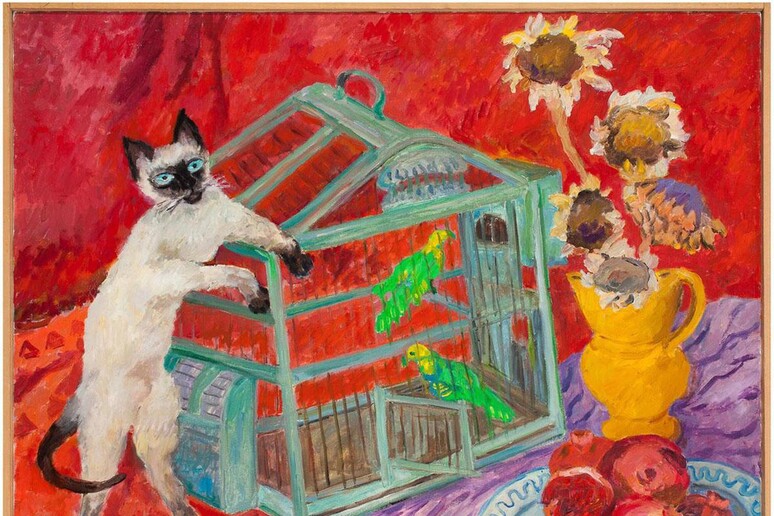A show of early 20th-century
Italian Jewish women artists highlights their condition as a
minority, in the year in which the 15th European Day of Jewish
Heritage takes as its theme 'Women in Judaism'.
From the Modigliani sisters to Adriana Pincherle and
Antonietta Raphael, this beautiful exhibit of 150 works by 15
artists runs through October 5 in Rome's Modern Art Gallery
(GNAM).
Titled 'Novecento Women Artists Between Jewish Vision and
Identity', the show not only displays the undoubted talent and
individual personalities of these artists, but also traces the
social and cultural milieu in which they grew and flourished,
allowing viewers to reconstruct the artistic environment of the
first decades of the 20th century between the academy and the
avant-garde.
And while women were penalized as a gender and Jewish women
doubly so, they also benefited from the strength of their
families and their tradition, which places a high value on
education for both sexes.
''There was no illiteracy in Jewish families, as both boys
and girls had to study in order to be able to read the Torah'',
explained one of the curators.
Such was the case of Annie Nathan (1878-1946), whose father
Ernesto was the mayor of Rome for six years, and who grew up in
a cosmopolitan environment imbued with the republican and
democratic ideals of Giuseppe Mazzini, one of modern Italy's
founding fathers.
Nathan studied with Giacomo Balla, in whose school she
learned to ''paint reality from reality'', entrusting her vision
to pure and vivid colors. She died in Switzerland, where she
fled Italy's anti-Semitic racial laws.
Corinna Modigliani (1891-1959), a second-degree cousin to the
better-known painter and sculptor Amedeo, studied in the atelier
of Pietro Vanni and was also influenced by Balla, her landscapes
and portraits of children swimming against backgrounds of
chromatically interacting patches recalling the master's
Divisionist period.
Like Corinna, her younger sister Olga (1873-1968) embarked on
what was at the time considered an unconventional lifestyle,
eschewing marriage in favor of travel and art. An undisputed
master of ceramic decoration, her work was exhibited at the 1914
Venice Biennale and featured in both private and public
collections.
Turin-born Paola Levi Montalcini (1909-2000) is represented
with early work from the 1920s, when like most of her city's
avant-garde she was influenced by Felice Casorati. There are
also paintings from her Abstract Expressionist period, and
canvases from the 1970s, when she explored the limits between
art and mathematics.
The last two exhibition halls are dedicated to the two most
prominent Jewish women artists. Pincherle (1909-1996), the elder
sister of renowned Italian novelist Alberto Moravia, studied the
Impressionists in Paris and was heavily influenced by Henri
Matisse, whose flat perspectives and vibrant palette infuse her
lovely portraits and still lives.
Raphael (Lithuania 1895-Rome 1975), whose paintings and
sculptures are a testament to her undisputed talent, was ignored
by critics until the 1950s, when she finally gained recognition
for her artistic output between the two world wars.
Curated by Marina Bakos, Rome Jewish Museum Director Olga
Melasecchi, and Federica Pirani, the show is promoted by the
Rome department of culture, the Capitoline superintendency, the
non-profit Foundation for Jewish Cultural Assets in Italy, and
the Rome Jewish Museum.
photo: Adriana Pincherle, Cat and Parrots, 1984
ALL RIGHTS RESERVED © Copyright ANSA











